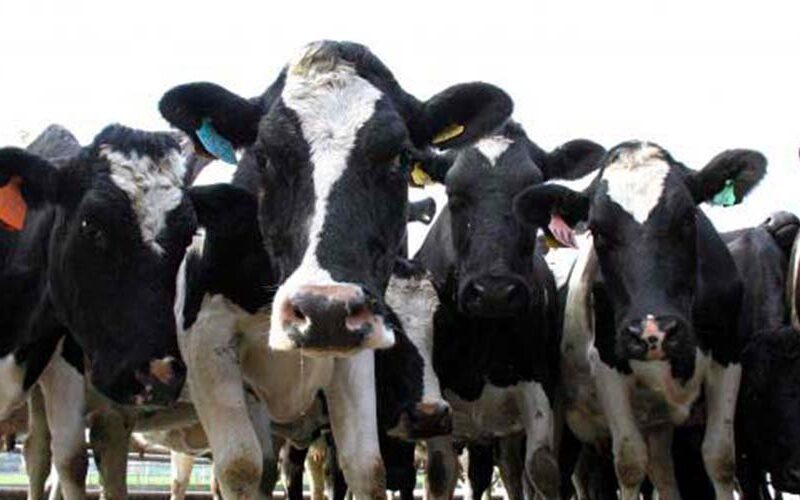The study of 18 countries showed that the NZ dairy industry had an on-farm carbon footprint that was 46% less than the average of the 18 countries included in the study.
The study showed milk production from NZ as defined from ‘cradle to farm gate’ is 0.74 kg CO2e per kg FPCM (fat and protein corrected milk).
The average within the study is 1.37 kg CO2e per kg FPCM.
The method used to calculate the emissions is the IPCC’s regional specific approach rather than the IPCC’s default setting, which when used lifts the footprint to 1.17 kg CO2e per kg FPCM.
DairyNZ chief executive Dr Tim Mackle says the study reaffirmed what the industry had largely thought – that NZ dairy production was world-leading in terms of the carbon emissions for the milk it produces.
He says there are two reasons why the industry had such a low footprint; its pasture based, outdoor farming system and secondly, the innovative, productive nature of New Zealand dairy farmers.
“Our systems are highly productive and our farmers are innovative and they invest and use research,” Mackle said.
Commissioned by DairyNZ, the study was independently produced by AgResearch and peer-reviewed by an international specialist in Ireland. The research analysed 55% of global milk production, including major milk producing countries such as Germany, India, USA, France and the Netherlands.
Mackle says the strict criteria around countries having at least 100 farms to go into the study’s data set limited the amount of countries used in the research.
At 0.74 kg CO2e per kg FPCM, NZ was followed by Uruguay at 0.85, Portugal at 0.86, Denmark at 0.9 and Sweden at 1. Peru was the highest emissions producer among the countries studied, at 3.29 kg CO2e per kg FPCM.
Peru is followed by Costa Rica at 2.96 and Kenya at 2.54. The carbon footprint is measured in total greenhouse (GHG) emissions per kg of product.
Ireland, which often is compared to NZ’s dairy industry, was 10th at 1.18 CO2e per kg FPCM.
The ‘cradle to farm gate’ analysis calculated milk’s footprint from paddock to when it leaves the farm gate. It includes inputs such as fertiliser and imported feed.
The research compares carbon dioxide equivalent (CO2e) emissions per kilogram of milk (fat and protein corrected milk – the nutritional content recognised in the study as CO2e per kg FPCM). This is an internationally recognised method.
The countries selected had published research that enabled a like-for-like comparison. AgResearch scientists Andre Mazzetto and Stewart Ledgard led the research, following methodology in line with International Organisation for Standardisation (ISO) standards.
Mackle says 85% of emissions in the milk making process come from inside the farm gate on NZ farms.
“If you are highly efficient at the farm level like we are, you can still ship your product to countries like Ireland and still be more efficient than the local product. That’s because roughly of the 15% remaining carbon, 10% is processing and 5% is transport,” he said.
The study is a strong value proposition for the dairy industry as customers put greater emphasis on the environmental footprint of food products. But that did not mean the industry could rest on its laurels, he said.
“At the same time, we have to sustain that success and that means building on it and that means getting better. This is not about ‘job done’, it’s a great base to start from,” he said.
There were no easy answers when it came to further efficiencies, and Mackle believed technology could play a crucial role in further lowering dairying’s footprint.
“Because we are already so efficient, there is no silver bullet to even greater efficiency. Significant investment in research and development is needed to find solutions,” he said.
The release of the study comes on the eve of the Climate Change Commissioner releasing a draft blueprint for how the country could reduce its carbon footprint. That blueprint is expected to contain details on to what extent agriculture will have to reduce its carbon footprint.
Mackle says it was timely because it gave context to where the industry sat. The study had taken a year before being completed in November and had just finished being peer reviewed.
“The [Climate Change] commissioner has been through some pretty robust analysis and we look forward to seeing it and engaging in it.”
Waikato dairy farmer and climate change ambassador George Moss says pasture-based farming and genetic improvement are key components to farmers’ low carbon footprint, but there is more that could be done in addressing climate change.
“We are world-leading at emissions efficient milk production, but we must continue to adapt and adopt new technology and knowledge,” Moss said.
“Our global competitors are never far behind, plus we know it is the right thing to do for our environment, our consumers and humanity as a whole.”










